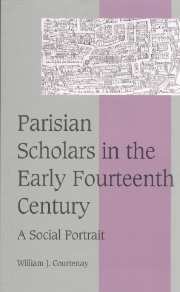Book contents
- Frontmatter
- Contents
- List of maps and figures
- Preface
- List of abbreviations
- INTRODUCTION: PARIS IN 1329
- Part I The recovery and context of a document
- Part II A window on a lost world
- Part III Biographical register
- Appendix 1 The computus of 1329–30
- Appendix 2 Analysis of the computus text
- Select bibliography
- Index of persons and places
- Subject index
- Cambridge Studies in Medieval Life and Thought Fourth series
Appendix 2 - Analysis of the computus text
Published online by Cambridge University Press: 17 August 2009
- Frontmatter
- Contents
- List of maps and figures
- Preface
- List of abbreviations
- INTRODUCTION: PARIS IN 1329
- Part I The recovery and context of a document
- Part II A window on a lost world
- Part III Biographical register
- Appendix 1 The computus of 1329–30
- Appendix 2 Analysis of the computus text
- Select bibliography
- Index of persons and places
- Subject index
- Cambridge Studies in Medieval Life and Thought Fourth series
Summary
The document as reconstructed in Appendix 1 divides itself into two quires with distinct characteristics. In the first quire, all in the same scribal hand with English elements (henceforth referred to as scribe ‘a’), all names are connected with specific streets or vici on the Left Bank, beginning with the cloister of St-Benoît in the center of the university district and ending at rue de Judas to the east. Furthermore, many of the names in this quire identify the head or representative of a group of scholars (socii), and whereas some entries indicate the amount of assessment paid, most do not. Finally, the number of socii and the amounts paid are almost always given in Arabic numerals. In the second quire, all but the last two columns of which are written in a different scribal hand (henceforth referred to as scribe ‘b’), only two streets are mentioned (the rue St-Victor and the rue St-Germain-l'Auxerrois), and it is unclear which of the names listed below each belong to these streets. Thus, in contrast with the first quire, this second quire is almost entirely a straight listing of individual names, only a few of which bear the designation “cum sociis.” Moreover, most of those named in the first two folios of the second quire include indication of the amount paid, invariably in Roman numerals.
- Type
- Chapter
- Information
- Parisian Scholars in the Early Fourteenth CenturyA Social Portrait, pp. 247 - 254Publisher: Cambridge University PressPrint publication year: 1999

